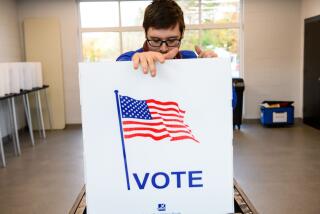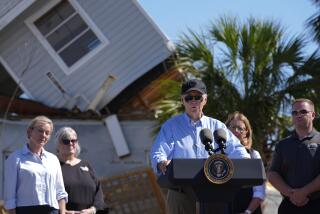New Orleans after Katrina
Sunday marks the fifth anniversary of the day Hurricane Katrina slammed into the Louisiana and Mississippi coastlines, causing the costliest natural disaster in U.S. history. Waters flowing over or through shattered levees flooded an estimated 80% of New Orleans, driving out more than half the population and devastating the local economy.
FOR THE RECORD:
New Orleans: An Aug. 28 editorial about New Orleans five years after Hurricane Katrina said the population was 162,000 in June. That’s the number of active postal addresses. The Census Bureau’s most recent population estimate was 354,850 in July 2009. —
Scenes from the flood are being replayed across television networks and websites this week, reminding Americans about the multiple governmental failures that helped cause and prolong the suffering. The coverage is also providing a snapshot of where New Orleans stands today — a city that has been reformed politically and reinvigorated institutionally, yet remains scarred and underpopulated.
Notable reforms include depoliticizing property assessments and levee maintenance, turning over much of the public school system to charter operators that have dramatically improved students’ performance, ousting corrupt public housing officials and demolishing failed projects, and starting to clean up the city’s notorious criminal justice system. At the same time, the Army Corps of Engineers has been overhauling the levees, a $15-billion initiative that is scheduled to be completed next year, and the city is finally moving ahead on more than $1 billion in long-awaited infrastructure improvements.
Other indicators provide a more mixed view. The enormous amount of construction work being done has kept the unemployment rate lower than in the rest of the U.S. The poverty rate has dropped in the city too (largely because many of the displaced poor resettled in neighboring parishes), but it’s still far higher than the national average. Blight, which was a problem long before Katrina, has been significantly reduced. Yet the city’s percentage of vacant or abandoned buildings continues to be the highest in the country. And its crime problem has gotten worse.
The city’s population post-Katrina has increased steadily — it had 162,000 residents in June 2010, or 80% of its June 2005 population — but not evenly. According to the Greater New Orleans Community Data Center, 30 of the 73 neighborhoods had regained at least 90% of their pre-Katrina residents, while 22 were still missing at least 30%. Three-fourths of the inhabitants of the Lower 9th Ward, which was flattened by floodwaters that toppled the levees next to the Industrial Canal, have yet to return.
The neighborhoods with lower return rates are a hodgepodge of restored and damaged buildings, a situation that arose in part from the decision by city leaders not to take a systematic approach to rebuilding after Katrina. Not that they didn’t try — they did. But fierce public backlash to the initial redevelopment plan led them instead to grant building permits to property owners with little regard to the condition of their neighborhoods.
A more fundamental challenge in New Orleans is that many home and apartment owners simply haven’t had the wherewithal to rebuild. Some have been stopped by the long wait for insurance payments and state-administered construction grants, others by the daunting paperwork requirements or the loss of their jobs in the successive shocks of Katrina and the recession. Now the state’s Road Home program, which has provided nearly $8.6 billion in aid to rebuild, elevate or buy damaged homes, is winding down, and property owners who haven’t tapped those funds are no longer eligible.
The best hope for homeowners and neighborhoods that are still struggling may be the community groups that emerged after Katrina to promote redevelopment and the volunteers who continue to contribute money and labor to New Orleans. A good example is Make It Right, a nonprofit led by actor Brad Pitt that plans to build homes in the Lower 9th Ward for 150 families. Make It Right is concentrating its resources in one corner of the city, trying to overcome blight by rebuilding entire blocks rather than fixing scattered houses.
A number of neighborhood groups are taking a similarly focused approach, but volunteer efforts across the city haven’t been coordinated strategically. By better directing volunteers’ energy and pairing it with new Mayor Mitch Landrieu’s initiative to raze more abandoned buildings, the city can create more blight-free clusters that serve as the core of rebuilt neighborhoods. It’s crucial that New Orleans make the most of the help it’s receiving, given how much work remains to be done. The city is well along the path toward a new New Orleans, but it will take years to complete the journey.
More to Read
Sign up for Essential California
The most important California stories and recommendations in your inbox every morning.
You may occasionally receive promotional content from the Los Angeles Times.










